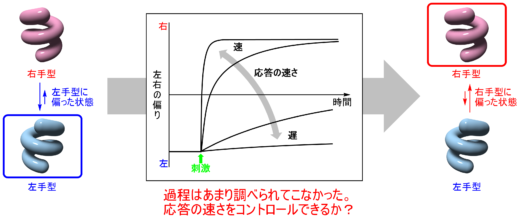2023-11-07 ノースカロライナ州立大学(NCState)
◆この研究は、抗体伝達と牛の仔の健康との重要なつながりを明らかにし、将来の牛の仔向けの初乳介入戦略と、妊娠中の牛と初産牛のためのワクチン管理の改善の必要性を指摘しています。
<関連情報>
- https://news.ncsu.edu/2023/11/colostrum-key-to-saving-beef-calves-from-trouble/
- https://www.sciencedirect.com/science/article/pii/S0167587723001903
- https://www.sciencedirect.com/science/article/pii/S0167587723001575
新生子牛の総血清および病原体特異的血清免疫グロブリン G 濃度、パート 1: 危険因子 Total and pathogen-specific serum Immunoglobulin G concentrations in neonatal beef calves, Part 1: Risk factors
Lisa Gamsjäger, Deborah M. Haines, Michel Lévy, Edmond A. Pajor, John R. Campbell, M. Claire Windeyer
Preventive Veterinary Medicine Available online 22 September 2023
DOI:https://doi.org/10.1016/j.prevetmed.2023.106026

Abstract
Maternal antibodies, delivered to the calf via colostrum, are crucial to prevent calfhood diseases and death. However, knowledge regarding the factors influencing this transfer of total and specific Immunoglobulin G (IgG) against common enteric and respiratory disease pathogens under current production conditions is sparse. The objectives of this study were to determine risk factors influencing total and pathogen-specific immunoglobulin G (IgG) concentrations against Escherichia coli (E. coli), bovine Rotavirus (BRoV), Cryptosporidium parvum (C. parvum), Bovine Viral Diarrhea Virus type 1 and 2 (BVDV), Parainfluenza Virus Type 3 (PI-3), Bovine Respiratory Syncytial Virus (BRSV), and Bovine Herpesvirus type 1 (BHV-1) in the serum of newborn beef calves. A total of 420 serum samples were collected from 1- to 7-day-old beef calves born on 6 farms in Alberta, Canada. Samples were analyzed by radial immunodiffusion for total IgG concentration and by enzyme-linked immunosorbent assays for pathogen-specific IgG concentrations against E. coli, BRoV, C. parvum, BVDV, PI-3, BRSV, and BHV-1. Multivariable multilevel linear and logistic regression models were built to evaluate dam- and calf-level risk factors associated with total and pathogen-specific IgG concentrations, failed transfer of passive immunity (FTPI; serum IgG < 10 g/L), and inadequate transfer of passive immunity (ITPI; serum IgG < 24 g/L). Farm was included as a random effect in all models to account for clustering at the herd level. Of the 420 calves included in this study, 5% (n = 20) and 18% (n = 75) of calves had FTPI and ITPI, respectively. Receiving colostrum intervention (i.e., being fed colostrum or colostrum product by either bottle or tube) was the most consistent risk factor for low total IgG concentration and significantly increased the odds of FTPI (Odds ratio (OR): 6.1, 95% CI: 2.0–18.9) and ITPI (OR: 4.8, 95% CI: 2.1–10.8). Calves born to cows consistently had higher pathogen-specific IgG concentrations (P < 0.0001), compared to calves born from heifers, and calves born to vaccinated dams had significantly higher BRoV, BVDV, and BHV-1-specific IgG concentrations. Interestingly, E.coli-specific IgG concentrations were associated with dam vaccination only in cows but not in heifers, which was likely due to differing vaccination strategies used. This study highlights the need to review and refine protocols with respect to dam vaccination and colostrum intervention on cow-calf operations.
新生子牛の総血清および病原体特異的血清免疫グロブリン G 濃度、パート 2: 健康および成長との関連 Total and pathogen-specific serum Immunoglobulin G concentrations in neonatal beef calves, Part 2: Associations with health and growth
Lisa Gamsjäger, Deborah M. Haines, Michel Lévy, Edmond A. Pajor, John R. Campbell, M. Claire Windeyer
Preventive Veterinary Medicine Available online 11 August 2023
DOI:https://doi.org/10.1016/j.prevetmed.2023.105993

Abstract
The association of poor transfer of passive immunity (TPI) with negative health outcomes is extensively researched in dairy calves. However, few field studies have examined the effect of total and particularly pathogen-specific Immunoglobulin G (IgG) concentrations on pre-weaning health and growth of beef calves. Hence, the objective of this study was to determine the association of total and pathogen-specific IgG concentrations against selected pathogens associated with neonatal calf diarrhea (NCD) and bovine respiratory disease (BRD) and the odds of pre-weaning treatments, mortality, and the growth of newborn beef calves. A total of 420 serum samples from 1- to 7-day old beef calves born on 6 farms in Alberta, Canada, were available for this observational study. Serum samples were analyzed by radial immunodiffusion for total IgG concentration and by enzyme-linked immunosorbent assays for pathogen-specific IgG concentrations against Escherichia coli (E. coli), bovine Rotavirus (BRoV), Cryptosporidium parvum (C. parvum), Bovine Viral Diarrhea Virus (BVDV), Parainfluenza Virus Type 3 (PI-3), Bovine Respiratory Syncytial Virus (BRSV), and Bovine Herpesvirus Type 1 (BHV-1). Data about the individual dam- and calf-level risk factors, calf treatments, mortality, and birth and weaning weights were collected. Multivariable multilevel logistic and linear regression models were built to evaluate the association of total and pathogen-specific IgG concentrations with the odds of mortality and average daily gain (ADG), respectively, while their association with the odds of pre-weaning treatment was established by univariable logistic regression analysis. The odds of calves with IgG concentrations < 10 g/L of getting treated (OR 7.9, 95 % CI 2.7–23.7) and dying (OR: 18.5, 95 % CI: 3.7–93.4) were higher than for their counterparts (P < 0.0001). Calves with IgG concentrations < 24 g/L also had higher odds of dying (OR: 10.1, 95 % CI: 2.6–40.2) and had lower ADG (-0.09 kg, SE: 0.03, P < 0.002) than calves with IgG concentrations ≥ 24 g/L. Higher BVDV-specific IgG concentration was protective against mortality (OR: 0.97, 95 % CI: 0.96–0.99, P < 0.001). This study highlights the negative association of inadequate TPI with health and growth of beef calves and thus, the need to refine protocols for dam vaccination and colostrum intervention in cow-calf operations to meet these higher IgG targets.



